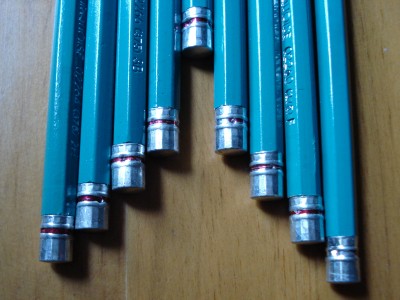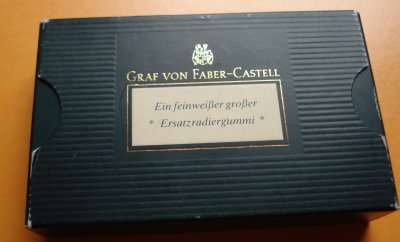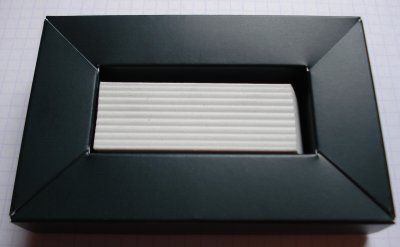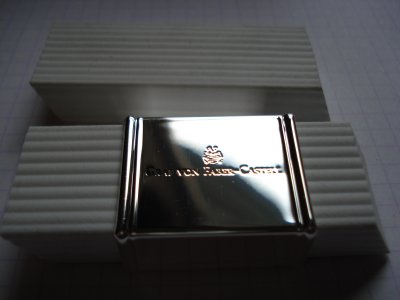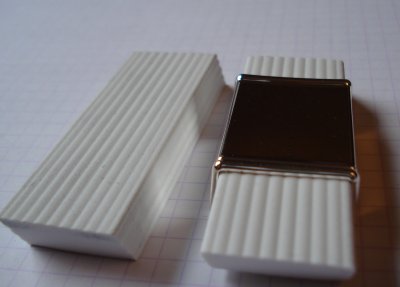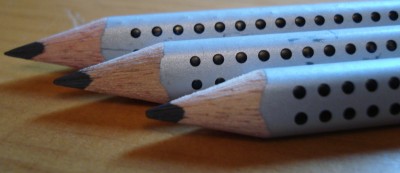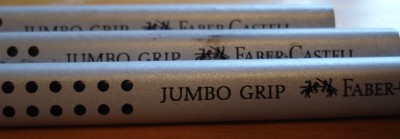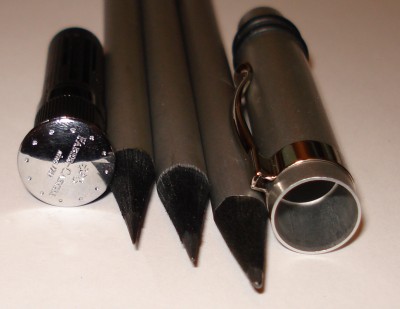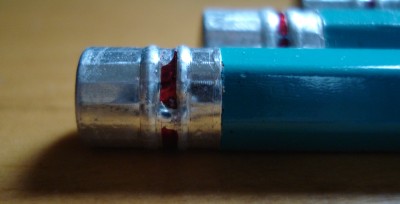
Here’s a modern pencil with a unique retro look and quite a bit of history. The Eagle Turquoise dates from at least 1901 (according to the Berol UK website) and is mentioned in Petroski’s The Pencil. It was made by Eagle (which became Berol), and eventually acquired by Sanford.
The pencil is turquoise (did I have to state that?) with silver stamping, and has a noticeable metal cap. It’s not a common feature. The cap has a faint red stripe.
It is imprinted:
USA ‘Chemi-Sealed’ Prismacolor Turquoise 02263 (375) 2B
The five digit number varies with the pencil grade.
It’s a good pencil, and does indeed seem quite strong. It writes smoothly and darkly without the graphite crumbling – no complaints.
The box (a typical art supply tin) has this description:
“The long-standing tradition of Turquoise professional drawing pencils continues to set the industry standard for the highest quality in technical and fine art drawing. Pure and smooth laydown in a wide variety of grades, the lead sharpens to a perfect point for a scartchless, glossy line in any weight.”
The “Prismacolor” branding is much more emphasized than the “Turquoise” name.
I happen to have a couple of older boxes of Turquoise pencils from the Berol and Eagle eras, shown below.
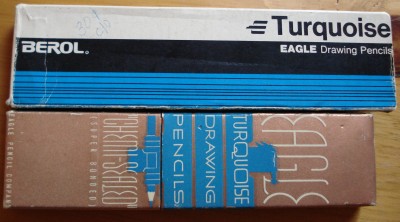
The newer box says, “Turquiose Eagle Drawing Pencils with strong, smooth durable leads precision graded in 17 degrees.”
The older box is more verbose:
“Stronger points…Developed by seven years of intensive research, the super-bonding process (U.S. Patent Nos. 1,854,905 and 1,892,508) welds the Turquoise lead and wood into a solid unit that effectively resists point breakage.
“Exact grading…Scientific proportioning of graphite and clay in 17 different lead formulas akes every Turquoise true-to-grade. The super bonding process prevents any change in this basic perfection and guarantees lasting uniformity.
“Smoother leads..The correct content of rare lubricating waxes is permanently retained in the leads by the impervious coating deposited on them in the super bonding process.”
Wow! Would it be possible to market a pencil in this manner today? I love all the references to science and research.
The older pencils actually have the patent numbers printed on the pencils!
The Turquoise is a winner – a reasonably priced high quality modern pencil, with some design flair and a century of history. What’s not to like?
